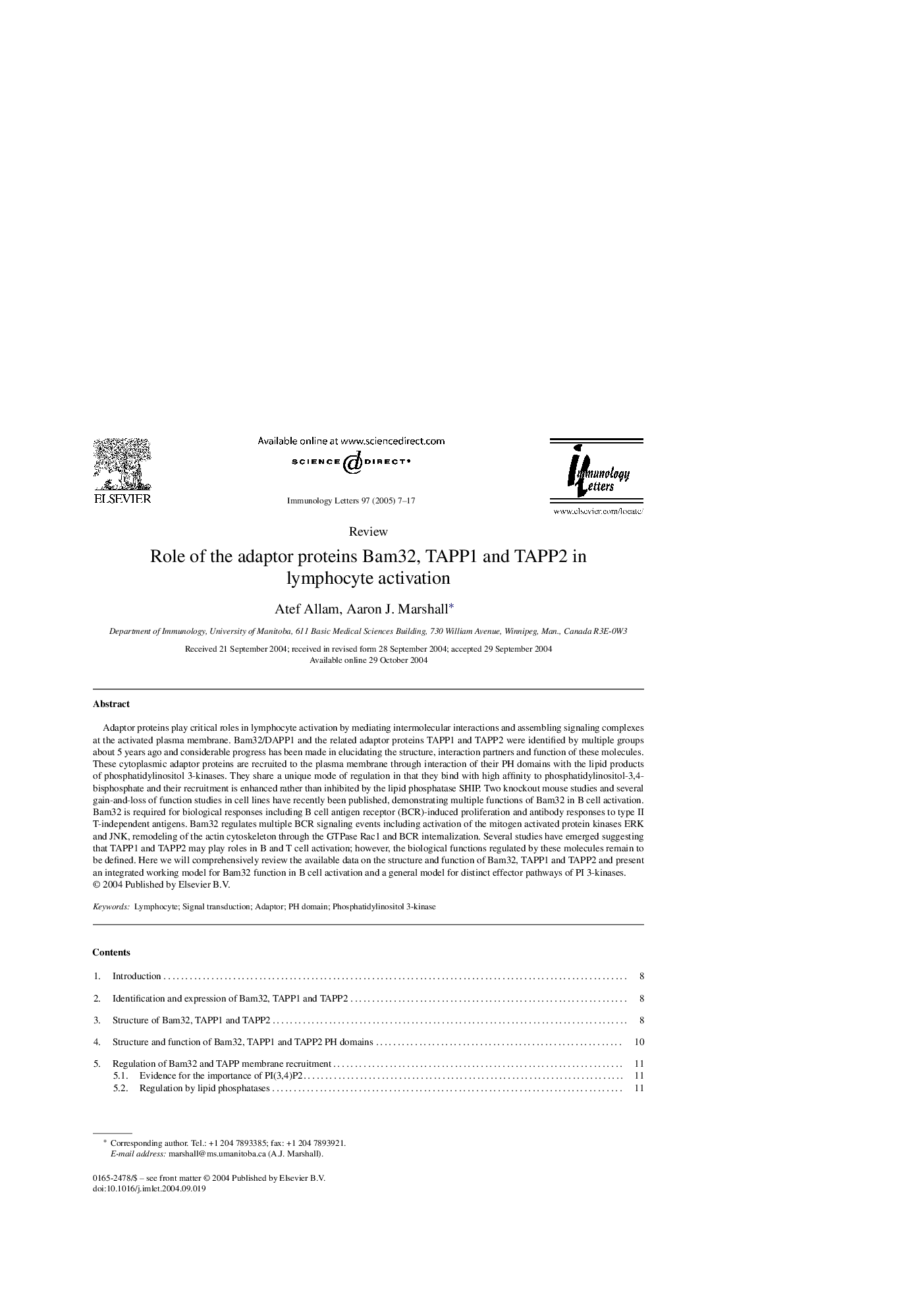| Article ID | Journal | Published Year | Pages | File Type |
|---|---|---|---|---|
| 9266338 | Immunology Letters | 2005 | 11 Pages |
Abstract
Adaptor proteins play critical roles in lymphocyte activation by mediating intermolecular interactions and assembling signaling complexes at the activated plasma membrane. Bam32/DAPP1 and the related adaptor proteins TAPP1 and TAPP2 were identified by multiple groups about 5 years ago and considerable progress has been made in elucidating the structure, interaction partners and function of these molecules. These cytoplasmic adaptor proteins are recruited to the plasma membrane through interaction of their PH domains with the lipid products of phosphatidylinositol 3-kinases. They share a unique mode of regulation in that they bind with high affinity to phosphatidylinositol-3,4-bisphosphate and their recruitment is enhanced rather than inhibited by the lipid phosphatase SHIP. Two knockout mouse studies and several gain-and-loss of function studies in cell lines have recently been published, demonstrating multiple functions of Bam32 in B cell activation. Bam32 is required for biological responses including B cell antigen receptor (BCR)-induced proliferation and antibody responses to type II T-independent antigens. Bam32 regulates multiple BCR signaling events including activation of the mitogen activated protein kinases ERK and JNK, remodeling of the actin cytoskeleton through the GTPase Rac1 and BCR internalization. Several studies have emerged suggesting that TAPP1 and TAPP2 may play roles in B and T cell activation; however, the biological functions regulated by these molecules remain to be defined. Here we will comprehensively review the available data on the structure and function of Bam32, TAPP1 and TAPP2 and present an integrated working model for Bam32 function in B cell activation and a general model for distinct effector pathways of PI 3-kinases.
Related Topics
Life Sciences
Immunology and Microbiology
Immunology
Authors
Atef Allam, Aaron J. Marshall,
